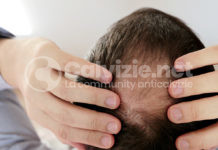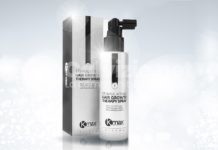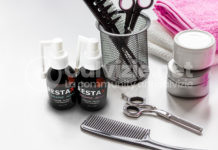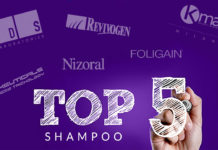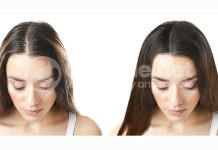Title: The Effect of Low-power Laser on the Murine Hair Growth
Author: Phil Sang Chung, M.D.1, You Chan Kim, M.D.1,2, Min Sang Chung, B.S.1, Sang Oun Jung, PhD1, Chung Ku Ree, M.D.1
Medical Laser Research Center1,
Department of Dermatology2, Dankook University,
College of Medicine, Cheonan, Korea
ABSTRACT
1. The mouse irradiated by the LaserComb showed 30% increase in the hair growing speed.
2. The region irradiated by the LaserComb shows the hair growing speed and the density much higher than the region not irradiated by the LaserComb
3. As a result of the observation of tissue sample for the cause analysis, it was found that the hair follicles was newly formed in the dermis irradiated by the LaserComb
INTRODUCTION
The low-powered laser therapy is a therapeutic method to stimulate voluntary healing on the damaged somatic part by photobiomodulation using laser irradiation. Since the development of therapeutic laser systems for medical and cosmetic purposes in 1960s, the somatic effect of low-powered laser irradiation on pain relief and wound healing has been proved. In addition, the low-powered laser has effects of anti-inflammation, immunosuppression, vasodilatation, stimulated blood circulation and anti edema, which are collectively called biostimulation effect Biostimulative effect of low-powered laser is widely used in the various medical fields because of convenience of use, easy to approach, stability and non-invasiveness. Though the application of laser is expected to affect hair growth by biostimulation such as vasodilatation and stimulation of blood circulation, any literature relative to this effect is hard to get. Therefore, this study intended to evidence the effect of low-powered laser treatment on hair growth of a mouse.
TEST SUBJECT AND METHOD
1. Subject animal
The test used 16 six-week C57BL/6 black mice bought from Samtako. The subjects were used after they were stabilized for three days in the mouse farm.
2. Laser source and procedure
(i) Laser source: This study employed the diode laser system with wavelength of 890nm and frequency of 1500 Hz. Its power was about 1.5mW. Acryl module was manufactured to apply laser. The laser power was measured with High-Performance Optical Meters (Model 2835-C, Newport, USA) by distance between the laser and the detector.
(ii) Test procedure
The hair on the back of a subject mouse was removed with an electric razor and its remaining hair was completely eliminated by applying a hair remover cream. Those subjects were divided into four groups; the first was case-control group, the second group included mice applied by low-powered laser, the third group was those who were applied with a hair stimulant &More®, of LG Household & Health Care, and the last group was applied with Spella 707®. Each group had four mice. For the second group, the mice were fixed on the mouse holder and applied with laser for 20 minutes once a day (Fig. 2). The third and last groups were applied with &More®, and Spella 707®, respectively, once a day for 30 days. The status of hair growth was observed with time. The photos were taken one day, seven days, nine days, fifteen days, and twenty-five days, respectively, after the start of the test. To compare hair growth in the laser-applied part and non-applied part, biopsy was performed 12 days after the application of laser and the dyed part was observed with a light microscope after hematoxylin-eosin dyeing.
RESULTS
The calculation of laser output power and treatment quantity by time
Output power of laser systems in the market was measured. The power was observed at points from 0.5 cm apart from the detector at the interval of 1 cm, to a distance where laser was not detected. As a result of measuring the power of laser with the detector, it was hardly detected at a point over 8 cm apart from the laser and was at 1.5mW/cm2 at a point 1cm apart (Table 1). As the most effective treatment time was 20 minutes as shown in a preliminary test, the treatment time was fixed at 20 minutes and the laser system was set 1 cm apart from the tissue. The laser was irradiated at 1.8J per unit area (1.5mW/cm2 x 20 x 60sec = 1800mJ/cm2 = 1.8 J/cm2).
1 The power and power density of low-power laser according to the distance between laser and detector.
Distance(cm) Power(mW) Power density(mW/cm2)
0.5 5.17 ¡¾ 0.15 1.64
1 4.68 ¡¾ 0.13 1.49
2 3.47 ¡¾ 0.16 0.31
3 2.46 ¡¾ 0.13 0.78
4 1.68 ¡¾ 0.13 0.52
5 1.19 ¡¾ 0.13 0.37
6 0.69 ¡¾ 0.08 0.21
7 0.35 ¡¾ 0.08 0.11
8 0.23 ¡¾ 0.17 0.07
2. Observation with naked eyes
For the case control group, the hair on the back of a mouse started to grow on the 13th day after it was removed and returned to a normal level 25 days later (Fig.3A).
For the second and third groups, the hair began to grow 9 days later and returned to a level prior to hair removal 20 days later (Fig.3B, 3C). For the last group with Spella 707®, the mice experienced their hair to start to grow on their backs 9 days later and recovered all their hair 15 days later (Figure 3D).
The third group with laser treatment showed a difference from the case control group and the groups treated with hair stimulants. It was found that for the case control group and those applied with hair stimulants, hair grew randomly on the hair-shaved area of a mouse as a certain period of time passed (Figure 4A).
However, for the second group with laser irradiation, hair started to grow on the laser-applied area and gradually expanded to neighboring areas (Figure 4B).
3. Histological Observation
12 days after laser treatment, many anagen hair follicles on the laser-treated area were found while there were few hair follicles on the non-treated area. (Fig 5, 6)
Small and black-colored spot (hair follicles) is confirmed to exist in a high density in the dermis.
The tissue irradiated by the laser formed the black-colored spot (hair follicles) in a faster period of time than the tissues not irradiated by the laser, and formed many new hair follicles in the dermis.
CONSIDERATIONS
High-powered laser mainly used for medical treatment causes tissues to break after it is absorbed into a body and turned into thermal energy. However, low-powered laser generates only a small amount of energy, of which a direct irradiation induces somatic temperature change. The temperature change induced by low-powered laser is confined in the range from less than 0.10C to 0.50C. While high-powered laser is an expensive system that can raise output power up to 100 W, low-powered laser is relatively a low-priced system that only has a few mW. The laser with 5mW was used in this test. Biological effects of low-powered laser are widely reported including anti-inflammation, pain reduction, wound healing, anti edema, antibiosis, immunity and local blood circulation improvement.
These effects are called ‘biostimulation’ because they are induced by stimulation. However, as low-powered laser is found to have a suppressive effect as well as a stimulative effect, the terms such as low intensity, low level or low power that focus on non-thermal, small energy, are used instead of biostimulation. The study and clinical application of low-powered laser started in Eastern Europe in mid 1960s and now low-powered laser is used worldwide to treat musculoskeletal disorders (MSD), pain, inflammation and so on.
In England, more than 40% of physical therapy clinics use low-powered laser and about 30% of dental clinics in Scandinavia use it. But, it is seldom used in the US and is not approved by the US FDA. Low-powered laser is used in various clinical areas for the therapeutic purposes. Recently, it is reported that low-powered laser is efficacious against rheumatoid arthritis, wound, post-sore neuralgia, damaged nerves, recurring cold sores, and vitiligo.
In Korea, Kong and others reported the laser irradiation relieved post-sore neuralgia from 60% of patients who had post-sore neuralgia. Kim and others reported that the irradiation relieved only pain for the laser-treated group of patients with herpes zoster while it made no difference in skin rash from the case control group.
In 2002, Vlacohs and others reported for the first time on two cases of terminal hair growing on a treated area as a side effect after nevus flammeus and tattoo elimination using intense pulse light that generates 400nm-1200nm. This phenomenon was presumed to take place due to local inflammatory response because inflammation was very severe on the laser-treated area for a few days. This side effect gives a possibility of laser therapy for hair growth.
In fact, Satino and others performed the test on 35 patients with androgen alopecia (28 men and 7 women) in 2003. The patients were made to comb their hair every other day for six months, for five to ten minutes with the brush that emitted low-powered laser beam. As a result, the patients, men and women alike, showed a remarkable increase of hair follicles and tensile strength on the temporal region and vertex.
These researchers assumed that even though they didn’t know how low-powered laser increased hair follicles and tensile strength, one or more factors among improved micro-vascular circulation, reduced inflammation and increased cell energy in the form of ATP (adenosine triphosphatase) worked together. In this study, low-powered laser irradiation stimulated hair growth. It was thought that laser irradiation induced vasodilatation, which in turn, increased blood flow and improved micro-vascular circulation that led to increased supply of nutrients. In this study, the laser irradiation showed weaker effects or the same effects with other hair growth stimulants on hair growth of the mice, but it showed better effects compared with the case control group.
The fact that hair started to grow on the laser-irradiated area indicated any relevance between low powered laser irradiation and stimulation of hair growth and suggested the possibility of laser to be used to treat hair loss. Further researches need to find the effect of low-powered laser treatment on human hair growth and how the laser stimulates hair growth.







